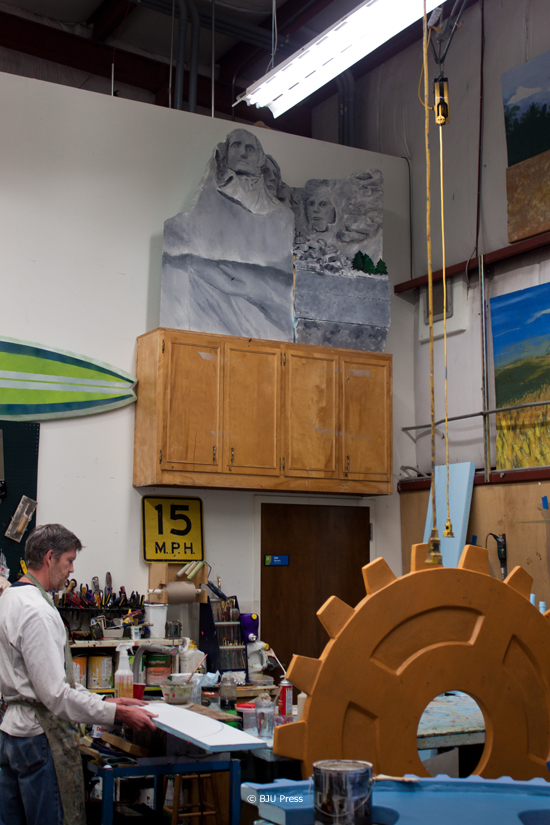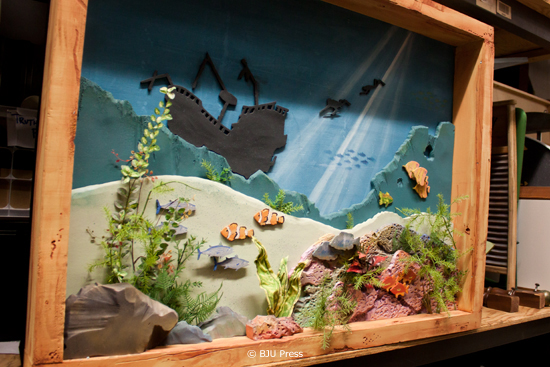Did you ever have one of those moments when you just wanted to test something for yourself? Many good ideas never progress beyond the thinking stage because of a lack of resources, but every once in a while, the opportunity to make that idea a reality presents itself. My coworker Stephen Garrison and I experienced this recently after discussing internet claims that microwaved water causes death or deformation in plants. During our discussion, we gradually realized that we didn’t have to just talk about it; this was something we could test ourselves.
Our conversation might have never have been anything more than another one of those unfulfilled good ideas if biological sciences teacher Ginger Ericson hadn’t needed an example of a controlled experiment for her upcoming seventh-grade Life Science Distance Learning course. Our idea seemed perfect because it would be a fairly simple experiment and because it would test a question that buzzes around the internet.
At the beginning, the biggest obstacle to our plan was finding a location to carry out our experiment. This time of year, temperatures can vary wildly in Greenville. Furthermore, the effects of the different water treatments, if any, would be diminished if the plants were exposed to rain. So we needed a controlled environment, one that filtered out factors such as rain and temperature fluctuations.
We were able to gain access to a fully climatized glass-metal greenhouse. This type of greenhouse is completely enclosed, so no rain can get to the plants inside, and the internal temperature can be kept constant.
Our setup was fairly simple.
- We filled fifteen four-inch pots with wet potting soil.
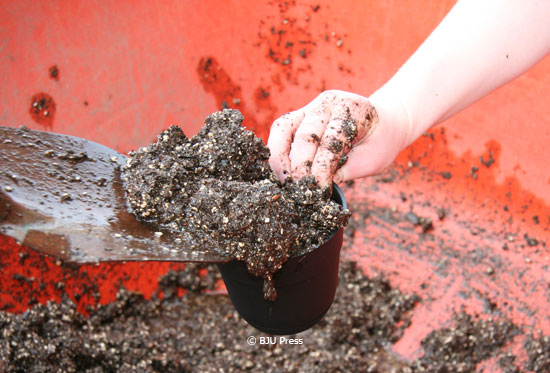
- We planted three or four Brassica rapa (turnip) seeds in each pot.
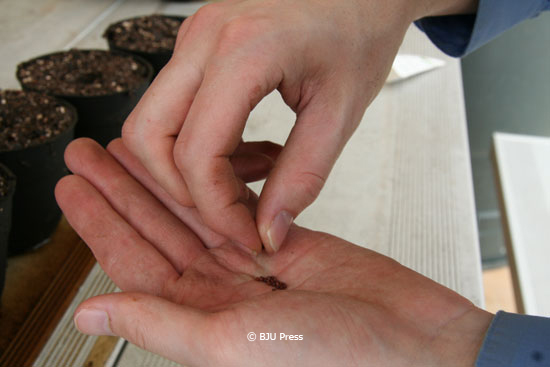
- Three groups received a random group of five pots:
- a control group
- a group to be treated with water previously boiled for five minutes on a hotplate
- a group to be treated with water previously boiled for five minutes in a microwave
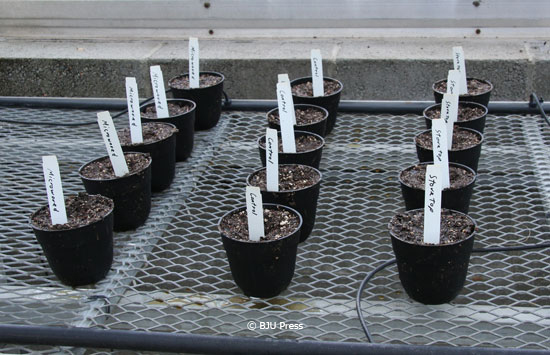
- We placed the pots in the greenhouse and allowed the seeds to germinate.
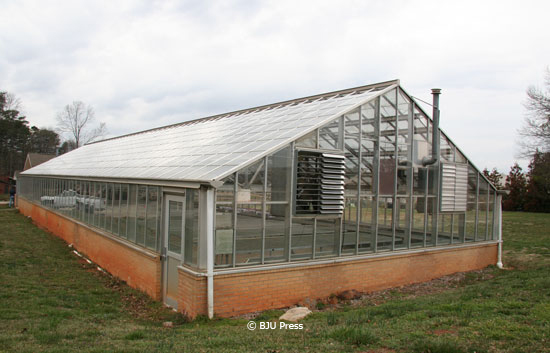
- Now that the plants have germinated, we continue watering each group with the corresponding water treatment and recording measurements for
- plant height,
- number of leaves, and
- number of flowers.
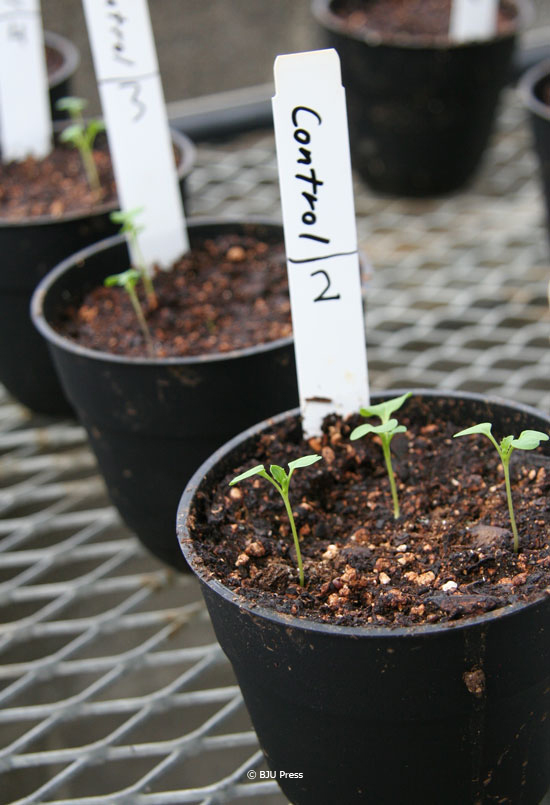
These data should give us an indication of what effect, if any, the different types of water have on the plants. Check back with us in May to find out the results of this good idea turned into reality.
• • • • •
Elwood holds a BA in biology and an MA in English from Bob Jones University. After working with the video lesson department at BJU Press for five years, he now serves as a secondary-level science writer at BJU Press. When not working, he enjoys taking random college classes, reading, playing disc golf, and hanging out with his wife and three kids.




